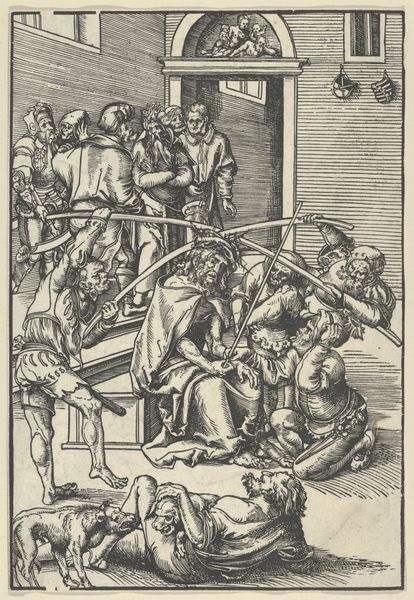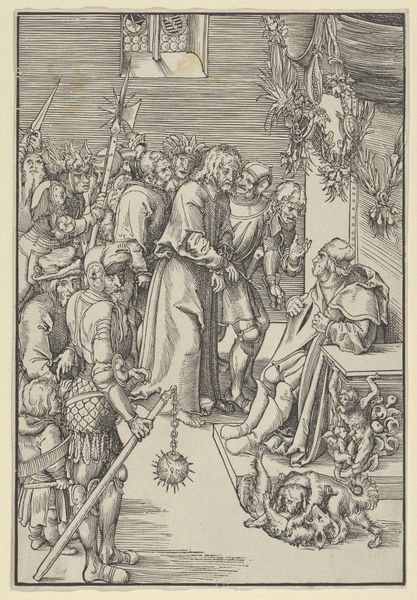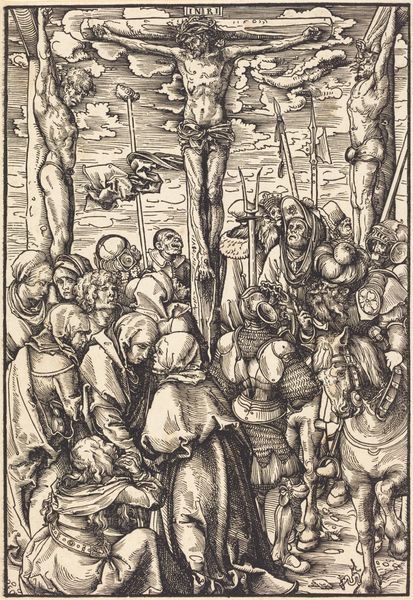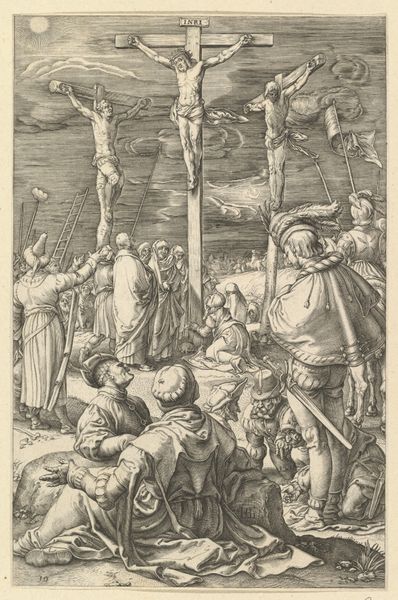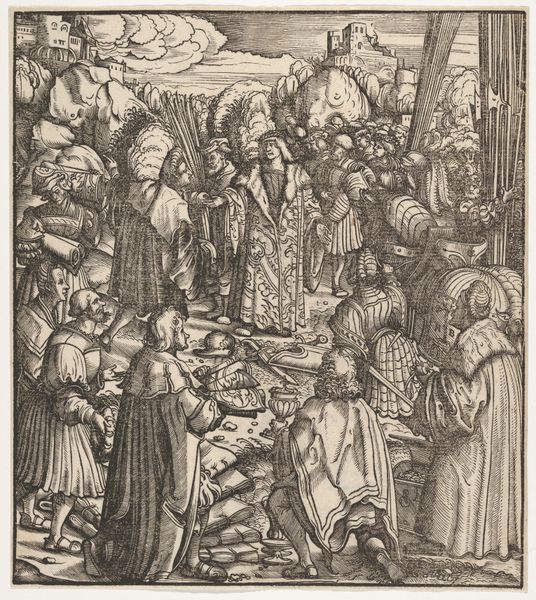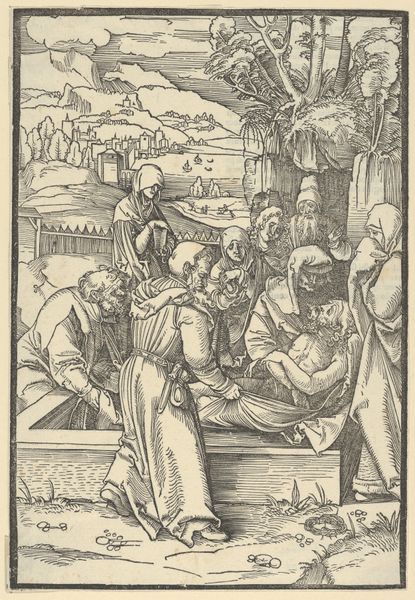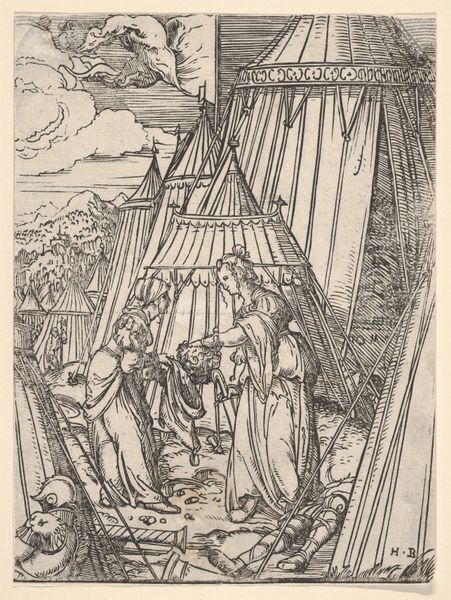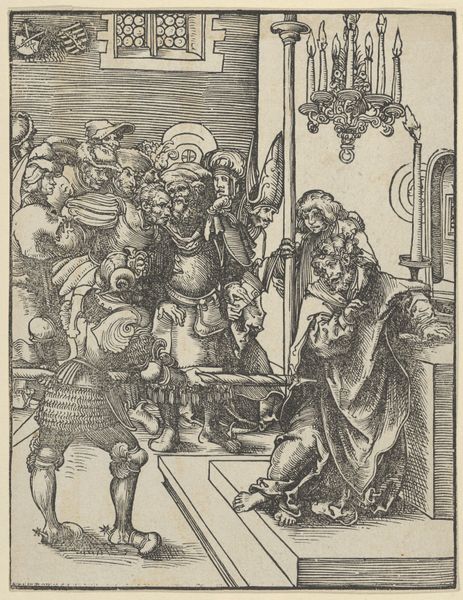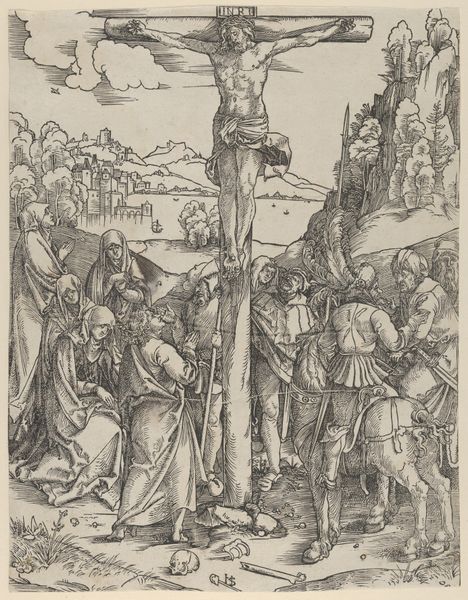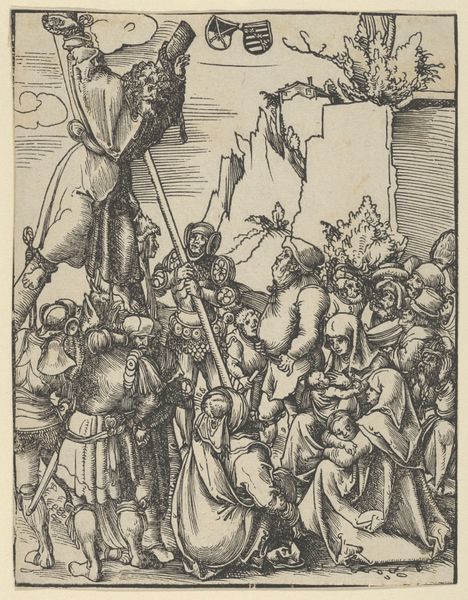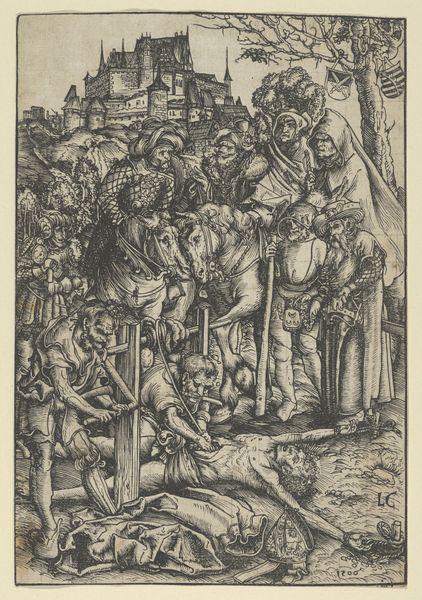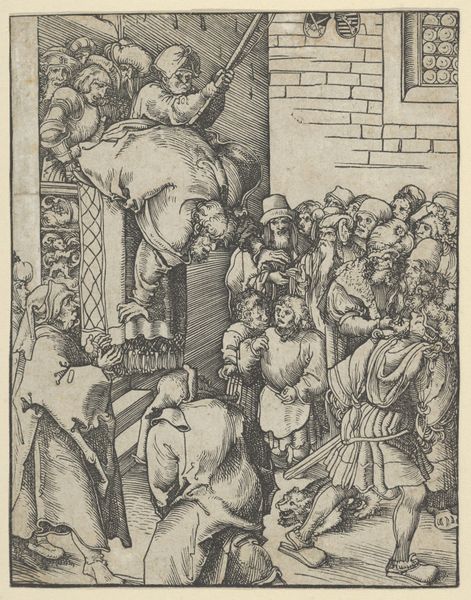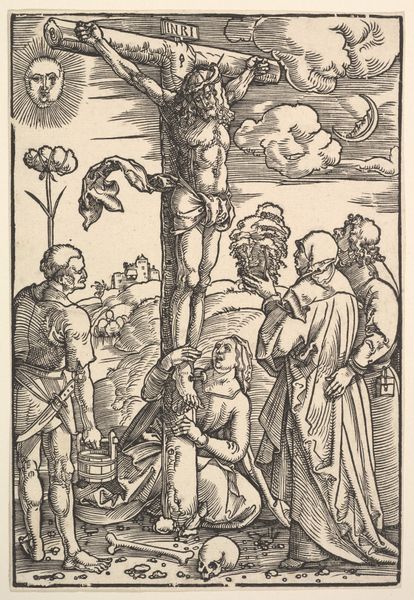
The Lamentation Beneath the Cross, from Speculum passionis domini nostri Ihesu Christi 1507
0:00
0:00
drawing, print, woodcut
#
drawing
# print
#
pen illustration
#
figuration
#
woodcut
#
history-painting
#
northern-renaissance
#
christ
Dimensions: Sheet: 9 7/16 × 6 1/2 in. (24 × 16.5 cm)
Copyright: Public Domain
Editor: This is "The Lamentation Beneath the Cross," a 1507 woodcut by Hans Schäufelein, part of a series called Speculum passionis domini nostri Ihesu Christi. The grief is palpable. I see a tender yet stark portrayal of suffering. What historical context brings this scene into sharper focus? Curator: Think about the rise of print culture at this time. Schäufelein’s woodcut wasn't just art; it was a mass-produced image. Religious images like these became tools for both personal devotion and public messaging during a time of religious upheaval. This particular woodcut and series allowed for private devotional exercises on an individual level, enabling believers to directly interact with the images, fostering personal connections and shaping their beliefs, rather than merely receiving pre-filtered religious doctrine. Notice the strong emphasis on Christ’s physical suffering. Why might that be important? Editor: To elicit an emotional response? Perhaps also a political one, to critique the Church’s excesses? Curator: Precisely. The vivid portrayal of Christ's suffering connected with broader social critiques of religious authority and wealth. Remember that woodcuts like these reached wide audiences. This availability challenges traditional notions of art being reserved for the elite, reflecting a shift towards a more democratized visual culture, and an early step towards mass media as we know it. Editor: So it’s not just about faith, but also accessibility and even dissent? Curator: Exactly! The scale of production and the powerful emotional resonance turned it into a potent social force, challenging the religious status quo and helping disseminate new beliefs. It reframes how we view the artwork: it's more than just a religious image, it’s a product and active participant in societal shifts. Editor: That changes everything for me! I initially saw only a moment of sorrow. Now I recognize its revolutionary potential as an accessible artwork, sparking discussion and devotion. Curator: Indeed. Seeing art through a historical and social lens provides valuable perspectives to understand the dynamics between faith, image, and power, revealing a new dimension to familiar artworks.
Comments
No comments
Be the first to comment and join the conversation on the ultimate creative platform.

